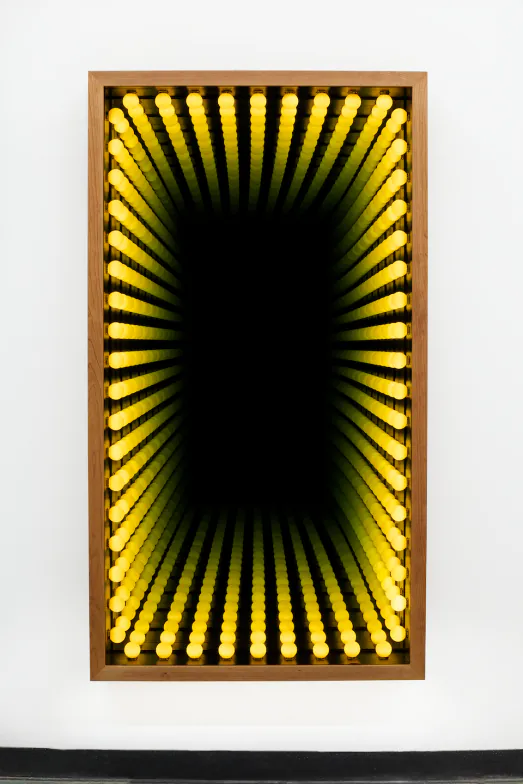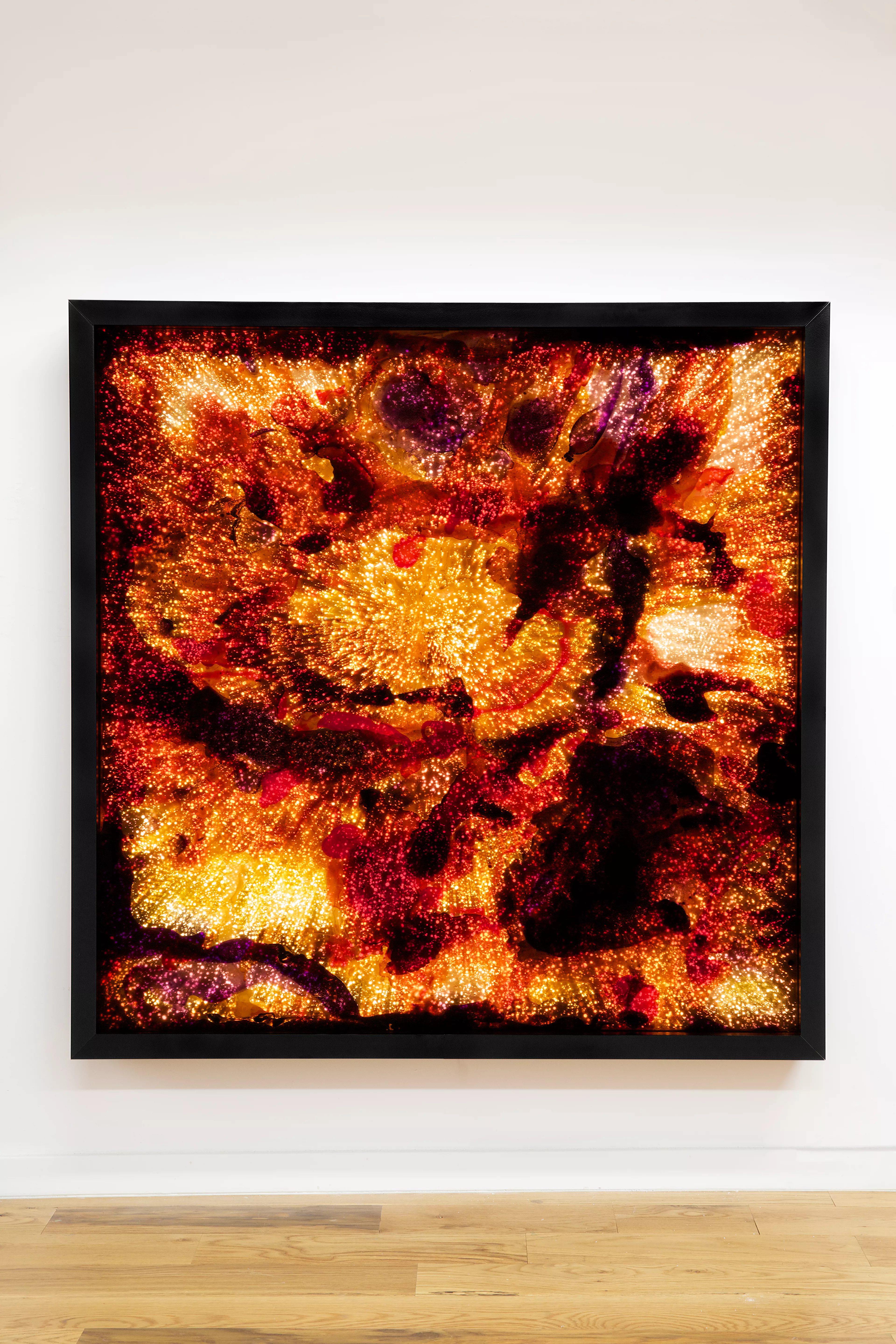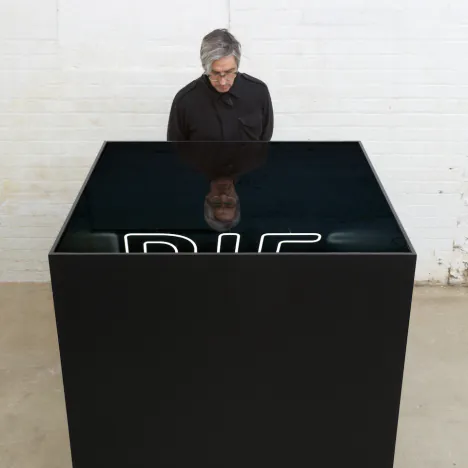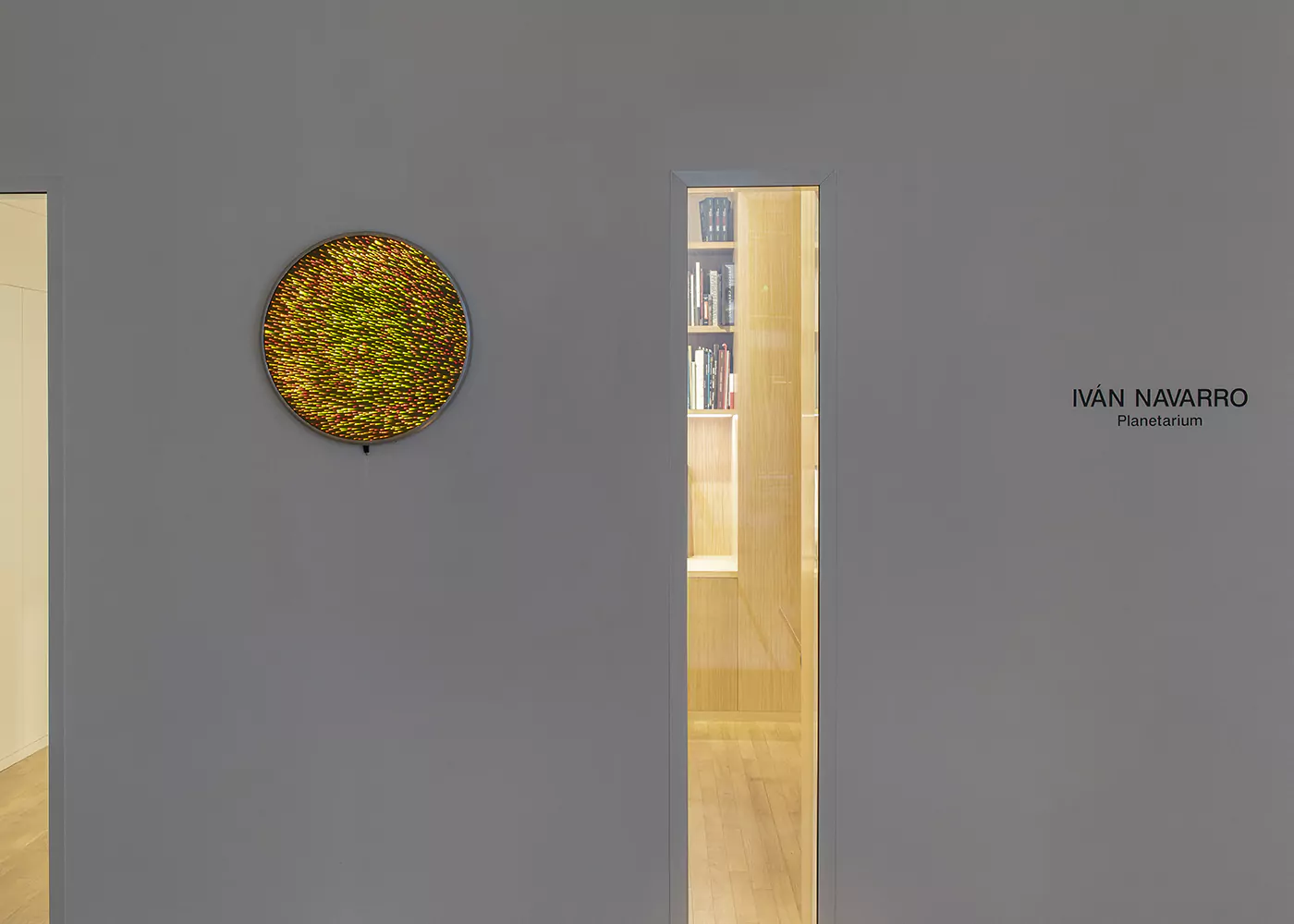
Iván Navarro
Planetarium
The City of Lights will be saturated with the radiant works of conceptual artist Iván Navarro as it hosts two new exhibitions, at Centquatre and Galerie Templon. The arts centre is offering a retrospective look at over 20 years of his work while the gallery is unveiling ten radically new pieces, born of pandemic-era isolation; bursting with inspiration and inventiveness, the works are entirely handmade by the artist.



Born in 1972 in Santiago, Chile, Iván Navarro grew up under the regime of Pinochet before moving to New York in 1997. Fascinated by the codes of minimalism and American design, he builds electric sculptures whose raw material is light itself. Haunted by his experience of the dictatorship, his work subtly intertwines artistic references and political engagement. He uses lighting, optical illusions and wordplay as tools to transform space, shift perceptions and explore questions of power and control. Over the years, he has created pieces that, behind their enticing appearance as light installations, evoke the darkest themes of our time: torture, imprisonment, domination, north-south inequalities and political propaganda.
With Planetarium, Iván Navarro takes the viewer on a poetic journey through cosmic landscapes. Constellations, nebulae and eclipses inhabit large panels of illuminated glass which open like windows onto infinite space. Both sublime and slightly disturbing, his imaginary maps question the limits of astronomy, mental representations and anthropocentrism. At the heart of this star-strewn voyage, pieces such as Shard refer to shattering blasts; and Mirage also implies a latent violence.

Mirage

The artist

Born in 1972 in Santiago, Iván Navarro grew up under the Pinochet dictatorship. He has lived and worked in New York since 1997. Iván Navarro uses light as his raw material, turning objects into electric sculptures and transforming the exhibition space by means of visual interplay. His work is certainly playful, but is also haunted by questions of power, control and imprisonment. The act of usurping the minimalist aesthetic is an ever-present undercurrent, becoming the pretext for understated political and social criticism.





